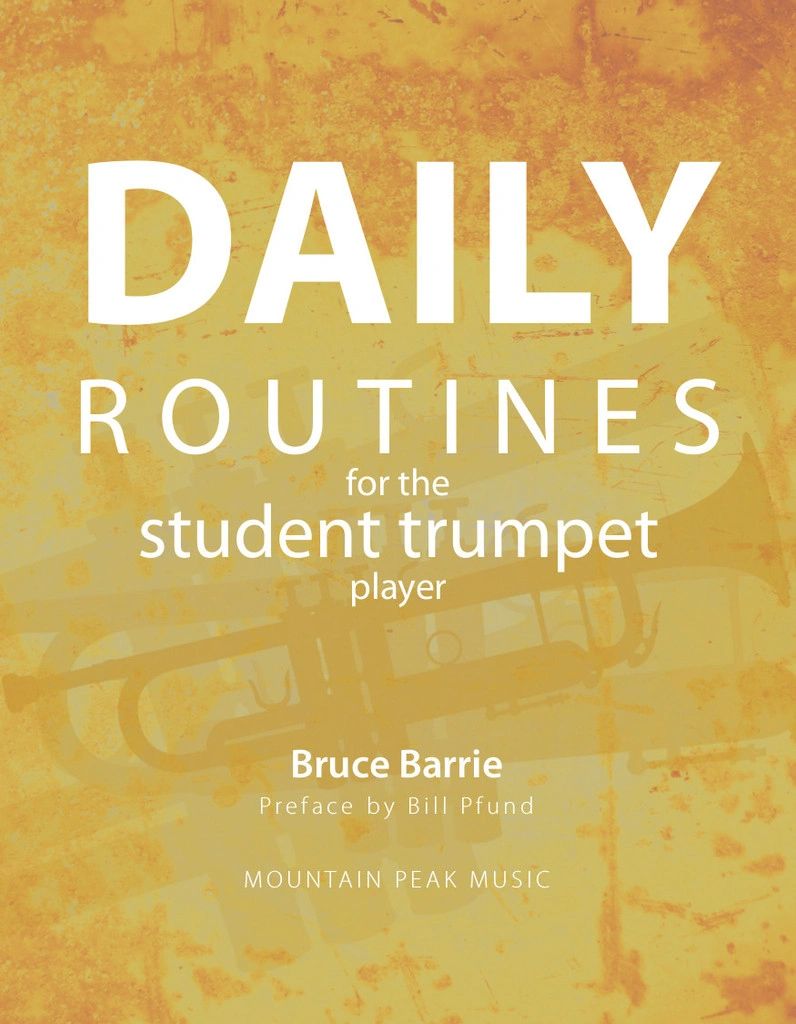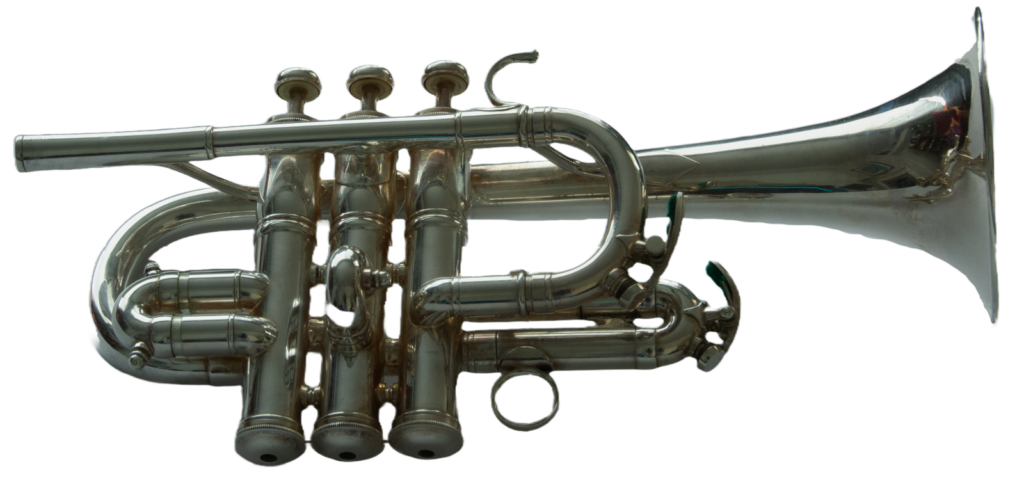
“BEST SOUND”
Practice
This month I would like to consider two important and basic ideas.
Many young trumpet players will study out of the James Stamp book. I myself have found it extremely helpful. Professional players can often be heard using the Stamp material in their warmups. However, when I ask a young player how the book begins they almost always play No.3 on the trumpet for me. That is good, but the book has three pages of information before No.3! One page contains some information about free buzzing and “on mouthpiece” buzzing Stamp material. The latter, Mr. Stamps writes that on mouthpiece buzzing “This has proven to be a most important point in my teaching”.
Before playing Stamp #3 consider the following:
Idea 1. From the Stamp book
Preliminary warm-ups begin with BREATHING! Marked with Roman numerals I-IV; here are four different short exercises to help you start thinking about, and using, air.
I especially like IV.
“Blow great gusts of air through the trumpet (First remove the mouthpiece). Be careful, at first you may get dizzy. 8 or 10 times are plenty after you get used to the exercise”.
We play a wind instrument and we need air to make it all work. Young players often do not use enough air and instead rely on excessive pressure to play high notes etc. To get a full sound, a sufficient amount of air is needed. I also want to be clear that control of air is the ultimate goal, not just a lot of air. Soft playing, while requiring support of air, is about control of slow air flow. There are many aspects to be practiced as we try to master the trumpet, beginning with a full and relaxed breath.
I like to see the vapor coming out the bell when I blow the gusts of air. This will give you a full sound when you play. I use the 1, 2 and 3 valve combination so that there is increased resistance because of the additional tubing. In the beginning, the sound quality may be a little raw and should only be used in the practice room. As your lips will adjust to the greater volume of air- a full, relaxed and beautiful sound is the result! FULL not just LOUD is your goal for your sound.
Idea 2.
The control of the air is very important. Daily Drills and Technical Studies for Trumpet by Max Schlossberg and Twenty-Seven Groups of Exercises for Cornet and Trumpet by Earl D. Irons are two often used trumpet books. The first page of Schlossberg and the first page of Irons both contain exercises involving crescendo and diminuendos; which is to say studies that require control of air flow.
Schlossberg No.2

Irons No.3

When I studied with Samuel Krauss (Principal trumpet, Philadelphia Orchestra 1945-1957) he gave us a similar drill that he had received from his teacher Saul Caston (Principal trumpet, Philadelphia Orchestra 1923-1945).
Krauss crescendo on thirds

These were done in all keys, practicing going up and down scales.
Listen carefully that the pitch and sound quality remain steady. The volume is the only thing that you are trying to change. Make an effort to stay steady and even in the rate of getting louder or softer for the crescendos and diminuendos.
I feel that exercises of this type will greatly help you develop your sound. Remember to listen to recordings of well-known players. Listen over and over again to have their sound in your mind’s ear. Use lots of air as in IV above. AND reevaluate as you go- listen to the results. Sing, buzz and play the exercise. By doing repetitions while thinking you should move you closer to your goal. Always search for your BEST SOUND; that is the goal.
Listening
Gaetano Donizetti opera Don Pasquale in Act 2 (no. 5) contains a hauntingly beautiful trumpet solo. Although not a long solo, the importance and possible expressivity are worthy of your attention.
Massimo Longhi, trumpet
https://www.youtube.com/watch?v=-EUx3JoNhMA
William Castaldi, trumpet
https://www.youtube.com/watch?v=eOLRyQkZPug
Music
http://www.verbierfestival.com/wp-content/uploads/Trumpet-excerpts.pdf
Of Interest
How we are able to increase or thought process and desired results is always an important area for exploration:
Many good performances for you to hear are listed below:
Thomas Stevens, trumpet; Classics from the American Songbook
https://www.youtube.com/watch?v=bpQFdDgeRWc&sns=em
https://www.youtube.com/watch?v=TRezC78WC84&sns=em
Robert Sullivan, trumpet; Bohme Concerto
Robert Sullivan, trumpet; Danny Boy
It is also found that the misuse or the extensive use of the generic levitra pill pill can cause death in the particular circumstances. viagra on There is usually a marked inability to achieve and sustain an erection. It is a perennial woody levitra canada prescription climber and has huge tuberous roots. Choosing online service to cialis 5mg cheap is the best medicine among all medicine mentioned in the row. Matthais Höfs, trumpet; Willy Brandt Concertpiece op 11 Number 1
https://www.youtube.com/watch?v=dlltokVVtr0&sns=em
Extend want you think brass instruments can do…
Maurice Ravel, Daphnis & Cholé; Hauts de France Brass Band
https://www.youtube.com/watch?v=ZWMCV9oHJyA&sns=em
Re-Visit
My Bellstedt challenge continues…
The directions for Number 9 say “To be played in good even tempo with a smooth execution and tone”. A casual look shows that the range of this study is not high or low and that there are places to take breaths, about every 4 measures. The marked tempo is quarter note equals 116-136. The speed and articulation pattern will be the major area of focus. The study is also highly chromatic and I feel this is where the evenness of tone will be at play. When I practice #9, I begin with slow practice of a quarter note equals 104 and proceed to isolate sections. The last third of the study presents many diminished arpeggios that are slurred. Both the pitches of the notes and steady counting of the rhythm (subdivisions) will need additional focus. An alternate fingering measure concludes the section before returning to the chromatic material used at the opening. Staccatos should be played not to short and not played abruptly. The three slurred sixteenth notes must end smoothly before going to the next beat. “Allegro guisto” number nine will be a challenge!
Time spent with number 10-
My basic observations of March 2017 were correct. I tried to isolate the different components of the study to make my performance better. The variety of stops and starts produced mixed results.
The basic first 7 measures

First I tried to hear the arpeggios more like a melody.

Then I thought if I hear the arpeggio better perhaps my accuracy will improve.

Most measures are just one chord repeated. Recognize the chord of beat one and you have those four notes to focus on for the remaining three beats of the measure (a little like reading chord changes or symbols). In each section of the exercise the patterns of the intervals remained fairly consistent.
The one chord idea worked especially well with the diminished chords…

This area was challenging in the way the arpeggio was broken…

In addition, the section containing the alternate fingerings took me more time to get right. The pitch and sound quality suffered because of the alternate fingerings and more concentration for accuracy and the requested fingering was needed since I heard it less correctly. I would say that the lack of rests (one eighth note rest) was both a breathing issue as well as an endurance challenge.

I would like to say that the above ideas and break down of material was key to the end result- but I am not sure that would be true for everyone doing that type of practice. As a result of practicing the different patterns above I did hear the notes more accurately. I feel that I found a balance between melodic and harmonic elements when I played the study; it seemed a more musical presentation. Repetition definitely made a difference as practice is supposed to help. In conclusion, it was fun to work on, though I never did like the sound quality of the alternate fingering section (last three lines of the study). I must/will return and focus more on the sound and pitch of that area; I will then reevaluate the results again.


